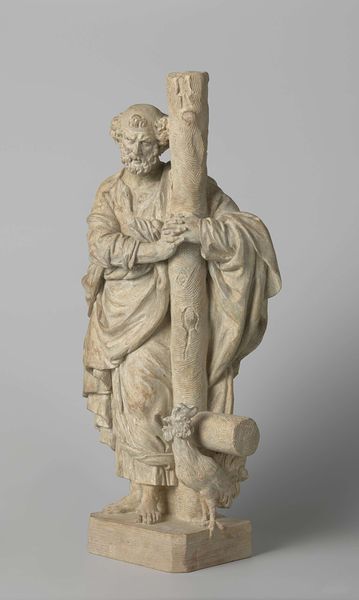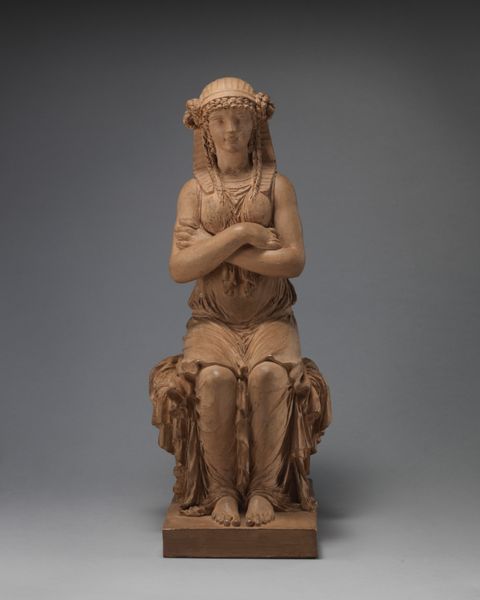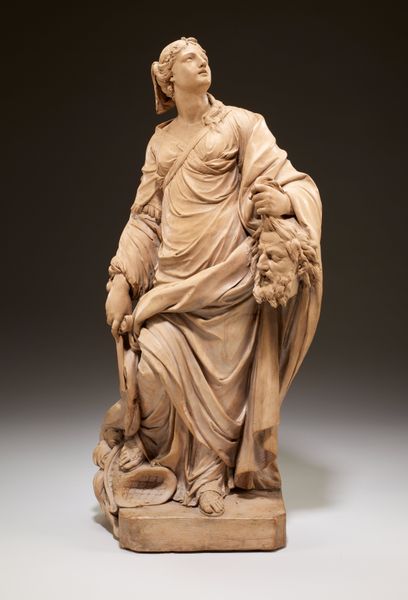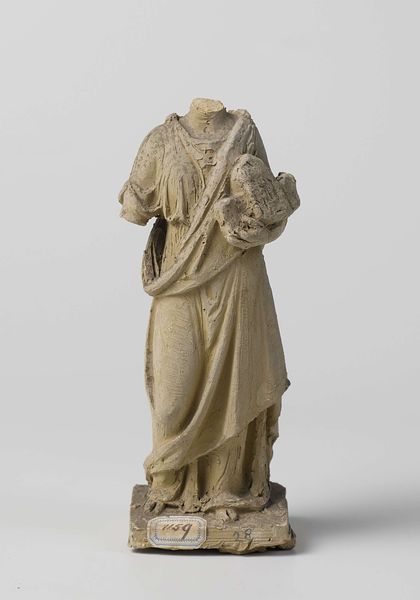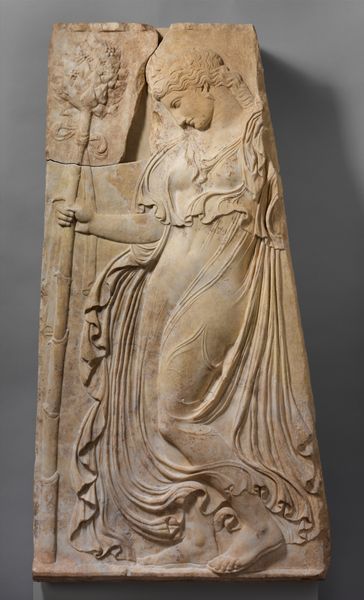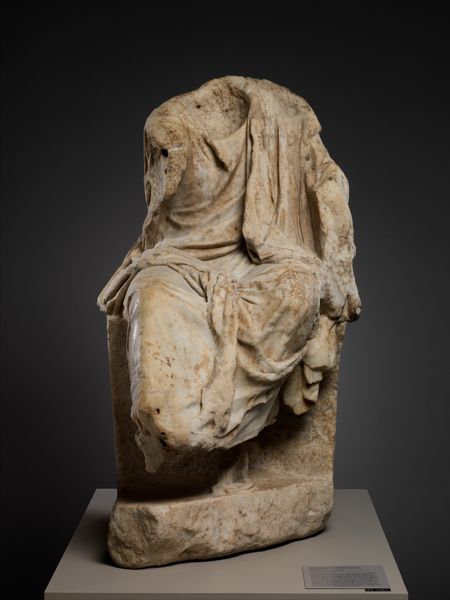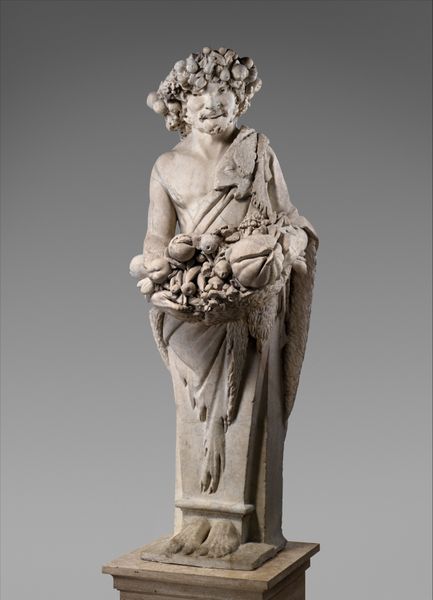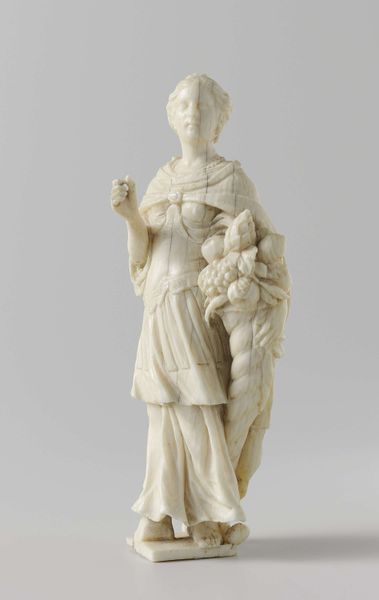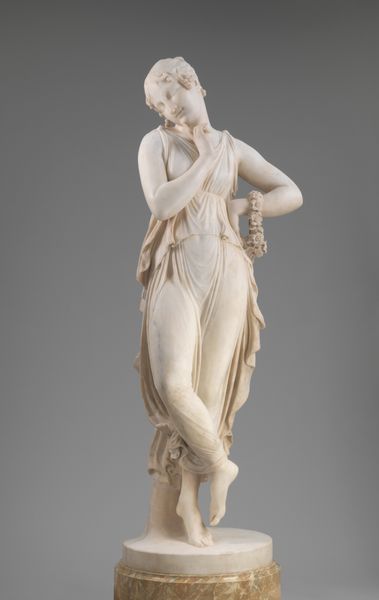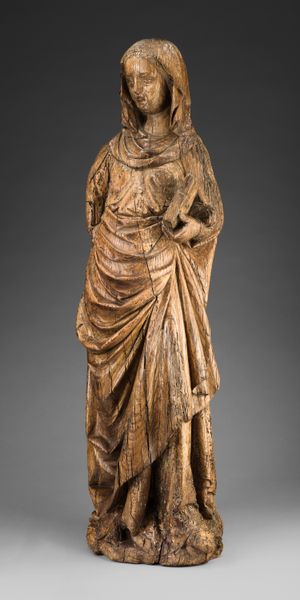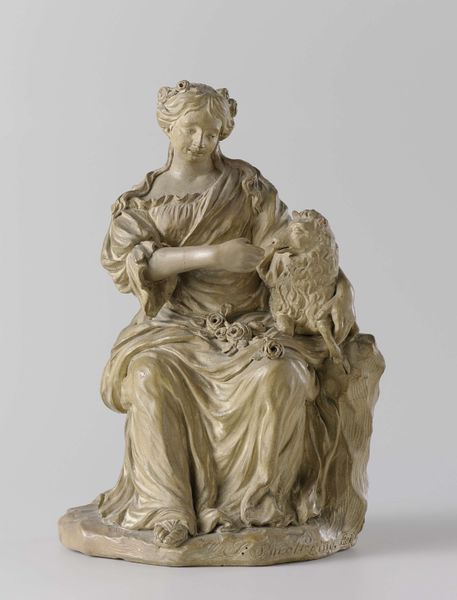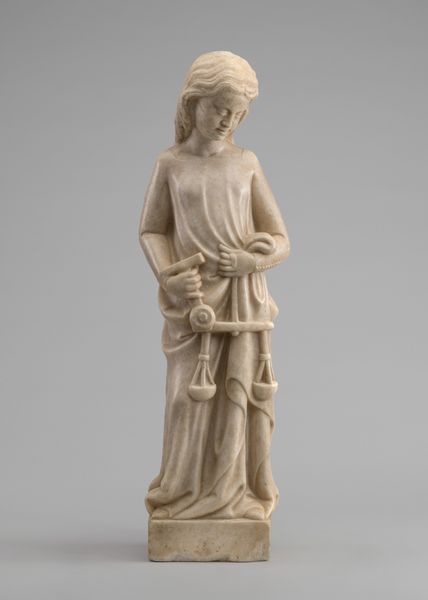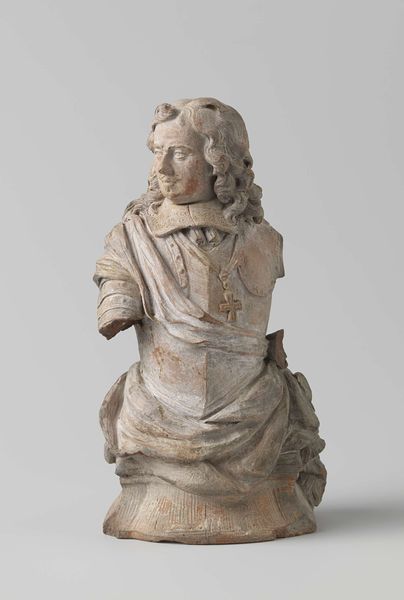
The Maid of Amsterdam, Part of a Model for the East Tympanum of the Amsterdam Town Hall (now Royal Palace) at Dam Square c. 1650 - 1653
0:00
0:00
sculpture, marble
#
portrait
#
allegory
#
baroque
#
sculpture
#
figuration
#
sculpture
#
history-painting
#
marble
Dimensions: height 43.5 cm, width 27 cm
Copyright: Rijks Museum: Open Domain
Editor: We're looking at "The Maid of Amsterdam," a marble sculpture made circa 1650 by Artus Quellinus, currently at the Rijksmuseum. She's holding a shield, looking quite serene. What does this piece communicate to you? Curator: Well, understanding its original context is crucial. This wasn't meant to be a standalone sculpture. It's part of a larger model for the tympanum of the Amsterdam Town Hall – now the Royal Palace. Knowing it was for public architecture informs its political significance. How does this influence your impression? Editor: It makes me think about how art can project civic values. Was Amsterdam trying to convey a specific message through this figure? Curator: Precisely. The "Maid" embodies Amsterdam itself, allegorically. Consider the timing – the Dutch Golden Age. The city was asserting its power, wealth, and independence. A virgin, she's incorruptible. This imagery solidified Amsterdam’s self-image and projected that to visitors and citizens alike. Did you notice the crown-like detail on her head? Editor: Yes, almost like city walls? Is it to further highlight this sense of incorruptibility and strength of the City of Amsterdam? Curator: Indeed. Think about the choice of marble, the classical drapery – everything contributes to an image of enduring prosperity and civic virtue that reinforces the government in power. Editor: So, it's not just a beautiful sculpture but a calculated political statement through art. Fascinating! I'll definitely look at civic art differently now. Curator: Exactly. Examining art in its historical and social context reveals how deeply intertwined art and politics really are.
Comments
No comments
Be the first to comment and join the conversation on the ultimate creative platform.
